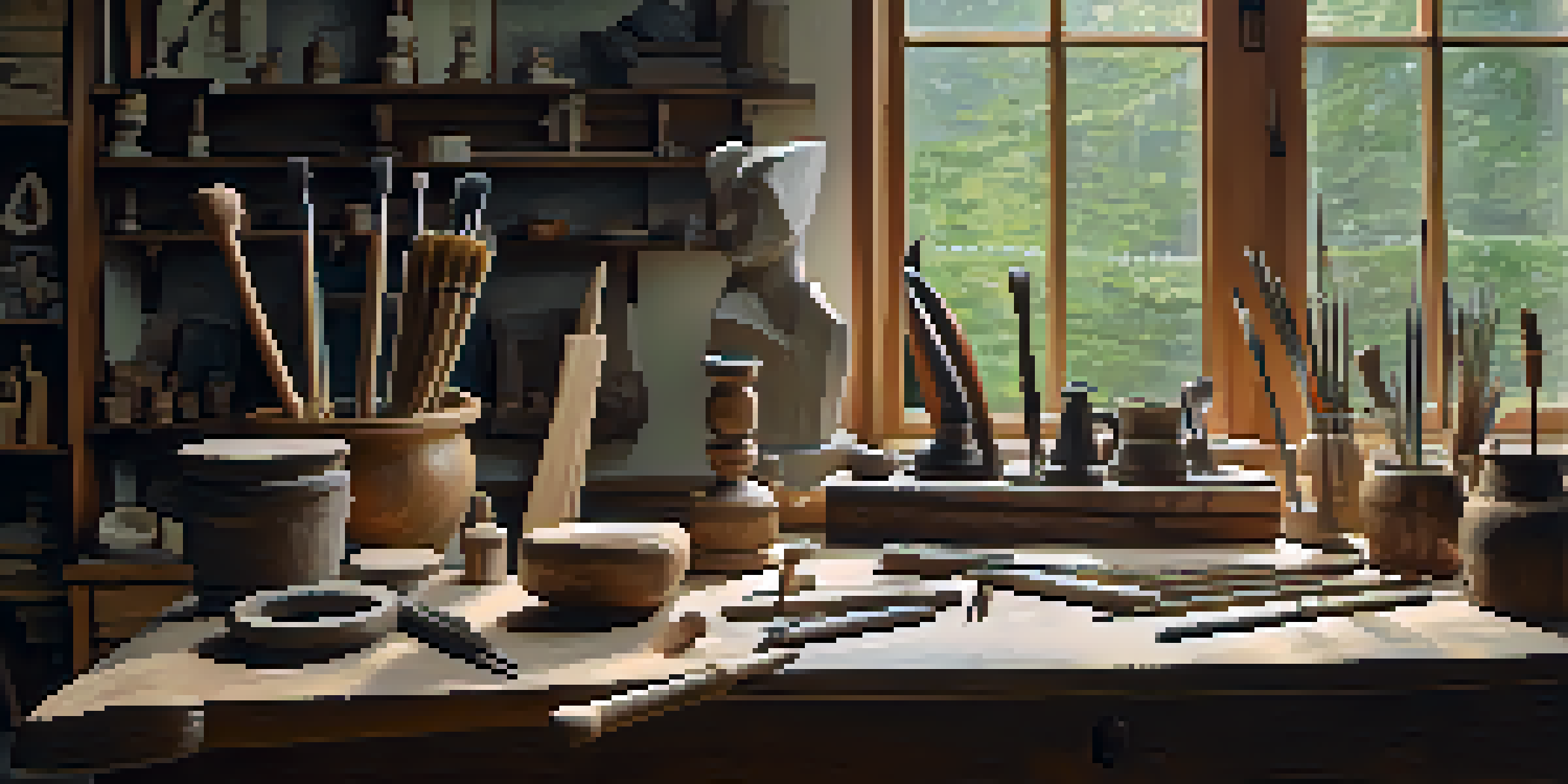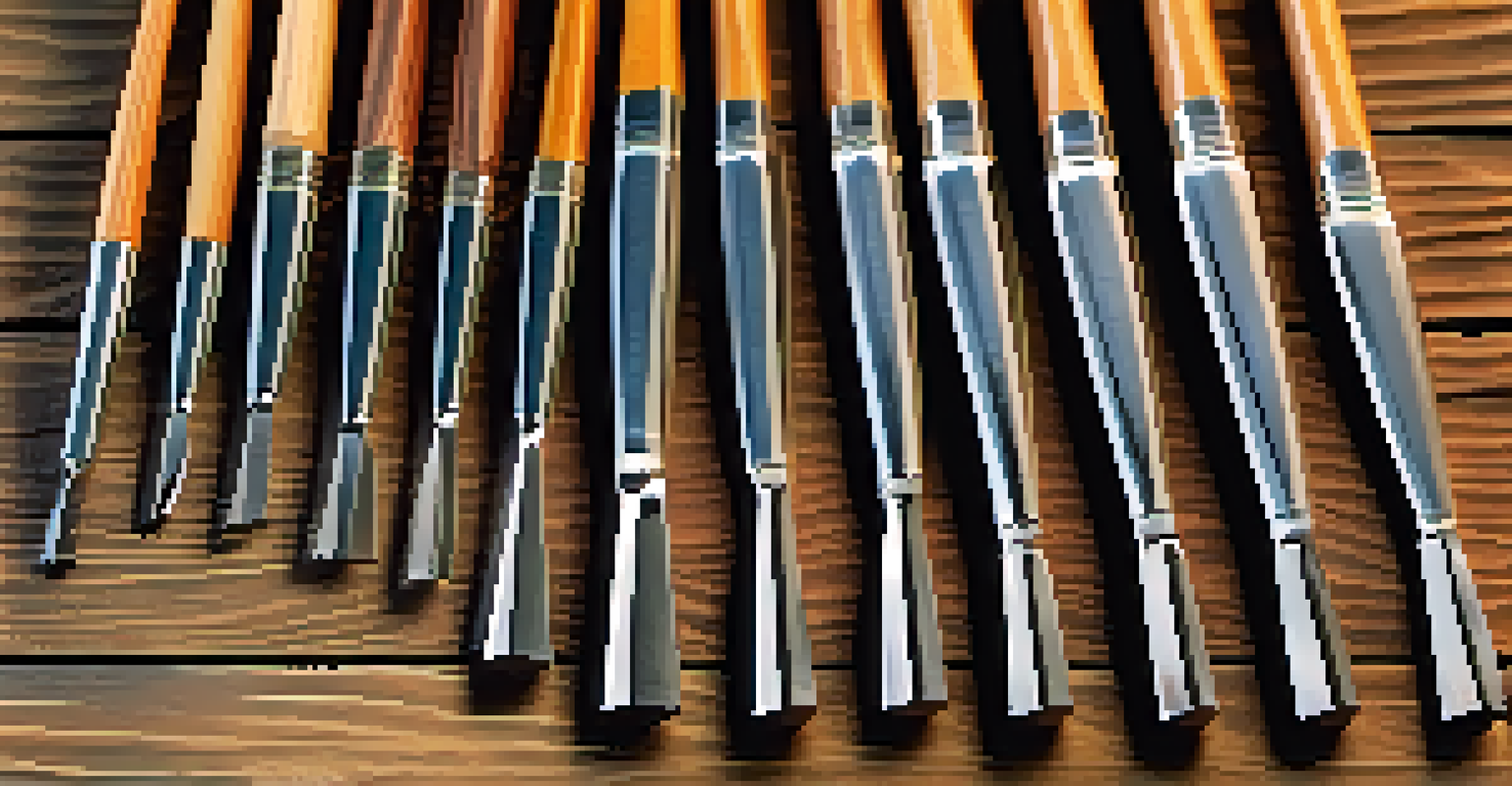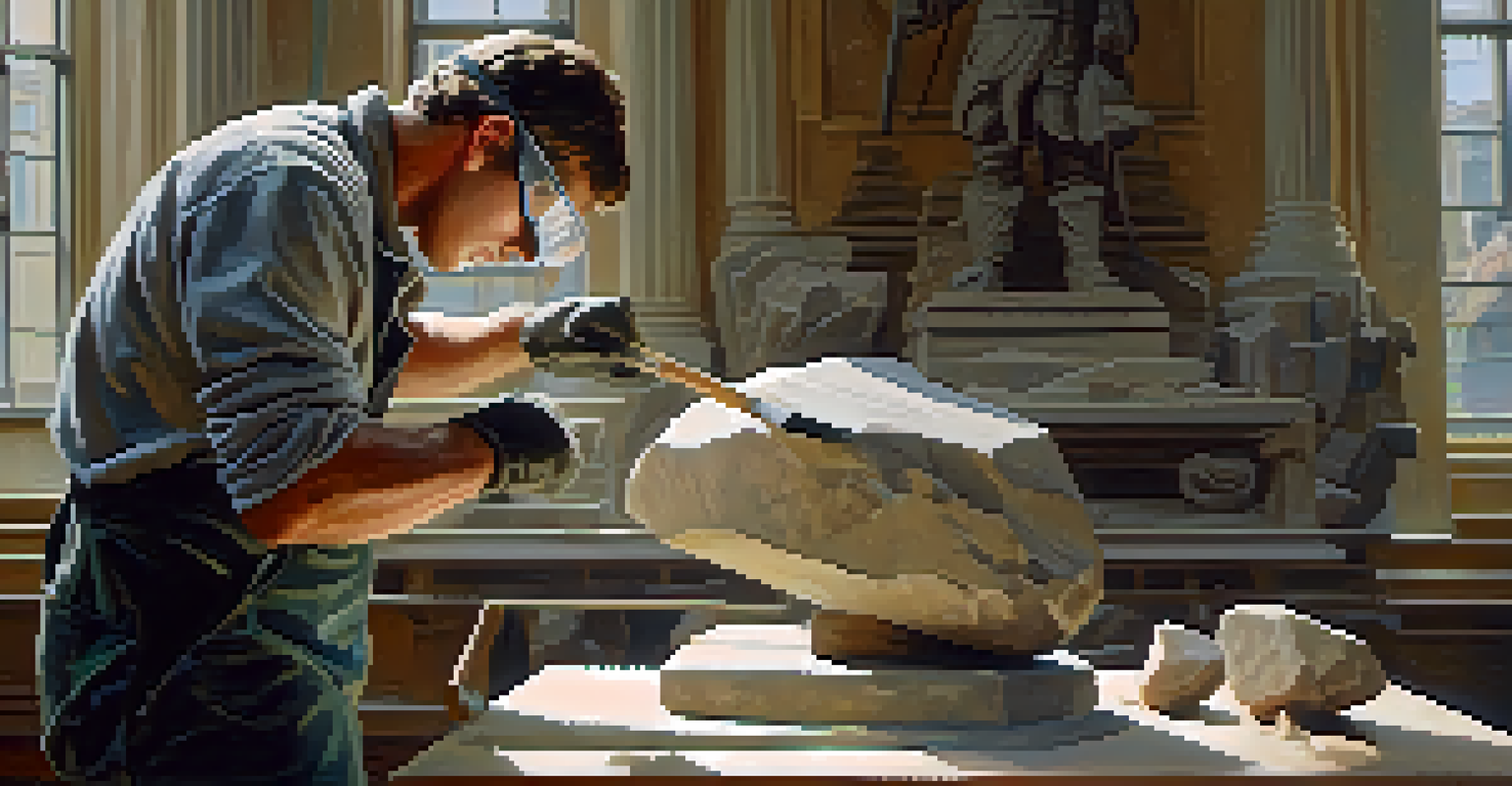Essential Tools Every Sculptor Needs for Carving Projects

Understanding the Basics: Essential Sculpting Tools
Before diving into your sculpting projects, it's important to familiarize yourself with the basic tools of the trade. From chisels to mallets, each tool serves a unique purpose that can significantly enhance your carving experience. Understanding these tools is the first step to creating beautiful sculptures.
The sculptor's job is to turn the materials of the world into something beautiful.
For instance, a chisel is not just a simple cutting tool; it comes in various shapes and sizes, each designed for specific tasks. A flat chisel can help you remove large amounts of material, while a pointed chisel is perfect for fine detailing. Knowing when and how to use these tools can make a world of difference in your sculpting.
As you embark on your sculpting journey, remember that the right tools can elevate your skills, allowing you to focus on your creativity and craftsmanship. So, let's explore the essential tools that every sculptor should consider adding to their toolkit.
Chisels: The Heart of Your Sculpting Toolset
Chisels are undoubtedly the backbone of any sculptor's toolkit. With a variety of shapes like flat, pointed, and curved, each chisel serves a specific purpose in the carving process. Choosing the right chisel for the job can enhance precision and control, making your sculpting experience more enjoyable.

For example, a flat chisel is fantastic for removing larger sections of material quickly, while a pointed chisel can help you achieve intricate details. As you practice, you'll develop a preference for specific chisels based on your style and the materials you work with. It's like having a painter's palette; each tool adds a unique touch to your artwork.
Essential Tools for Sculpting Success
Familiarizing yourself with key sculpting tools like chisels, mallets, and rasps is crucial for enhancing your carving experience.
Investing in high-quality chisels is essential, as they not only improve your technique but also stand the test of time. Remember, a well-maintained chisel can be your best friend in the studio, helping you create stunning sculptures with ease.
Mallets: The Perfect Partner for Your Chisels
Just as a painter needs brushes, a sculptor requires mallets to effectively use chisels. A mallet provides the force needed to drive your chisel into the material without damaging the tool itself. This becomes especially important when working with harder stones or dense woods.
Art is not what you see, but what you make others see.
There are various types of mallets available, such as rubber, wooden, or even fiberglass. Each type offers its own benefits; for example, a rubber mallet can absorb shock and minimize vibrations, making it easier on your wrists during long carving sessions. Choosing the right mallet can enhance your carving accuracy and comfort.
A good rule of thumb is to select a mallet that feels comfortable in your hand and matches the chisels you frequently use. As you sculpt, you’ll find that the right mallet can help you achieve more precise cuts, resulting in cleaner lines and smoother finishes.
Rasps and Files: Shaping and Smoothing Your Sculptures
Once you've made your initial cuts, rasps and files come into play to refine your work. These tools help shape and smooth surfaces, allowing you to bring out the finer details of your sculpture. Think of them as your finishing brushes, perfect for creating that professional touch.
Rasps typically have a coarse texture, making them ideal for quickly removing material and shaping your piece. On the other hand, files are perfect for finer, more detailed work. They come in various shapes, like flat, round, or half-round, allowing you to reach into corners and curves with ease.
Safety Gear is a Must for Sculptors
Investing in proper safety gear, such as goggles and gloves, protects you from potential injuries while allowing you to focus on your art.
Incorporating rasps and files into your toolkit means you can transition from rough shaping to detailed finishing smoothly. As you work on your sculptures, these tools will help you achieve the polished look that sets your art apart.
Safety Gear: Protecting Yourself While Sculpting
Sculpting can be an exhilarating experience, but safety should always be a top priority. Investing in proper safety gear helps protect you from flying debris and sharp tools. Essential safety gear includes goggles, gloves, and masks, which can prevent injury and keep you focused on your art.
Goggles are crucial for shielding your eyes from dust and particles that may arise during carving. Additionally, wearing a mask can help you avoid inhaling harmful dust, especially when working with materials like stone or certain woods. Gloves, on the other hand, can provide a secure grip while also protecting your hands from cuts.
Taking the time to gear up not only keeps you safe but also allows you to work more confidently. Remember, a safe sculptor is a happy sculptor, and being prepared will enable you to take on any project with enthusiasm.
Workbenches: Creating Your Ideal Sculpting Space
Your workspace plays a significant role in your sculpting process, and a sturdy workbench is a must-have. A well-designed workbench provides the perfect surface for carving, allowing you to work comfortably and efficiently. It's like having a dedicated canvas for your masterpiece.
When choosing a workbench, consider factors like height, stability, and surface material. A higher bench can reduce strain on your back while working, while a sturdy surface prevents movement as you carve. Many sculptors also appreciate benches with built-in storage for tools, keeping everything organized and within reach.
Embrace Digital Tools in Sculpting
Incorporating digital tools like 3D modeling software can complement traditional methods and inspire innovative designs in your sculptures.
Creating an inviting workspace not only enhances your comfort but also sparks creativity. By investing in a proper workbench, you'll find yourself more inspired and productive as you bring your artistic visions to life.
Measuring Tools: Precision is Key in Sculpting
In the world of sculpting, precision is key, and measuring tools are here to help. Whether you're working on a large installation or a small figurine, accurate measurements ensure your proportions are spot-on. Think of these tools as your guiding stars, leading you to a well-balanced sculpture.
Common measuring tools include calipers, rulers, and even compasses for circular shapes. Calipers are particularly useful for measuring depth and width, allowing you to maintain consistent proportions throughout your work. By incorporating these tools into your process, you’ll be able to create sculptures that are not only beautiful but also structurally sound.

Don't underestimate the power of precise measurements; they can make the difference between a good sculpture and a great one. As you develop your skills, these tools will become invaluable allies in your artistic journey.
Digital Tools: Embracing Technology in Sculpting
In today's digital age, technology is revolutionizing the art of sculpting. Digital tools like 3D modeling software and CNC machines can complement traditional methods, allowing sculptors to experiment with new designs and techniques. Think of it as expanding your toolkit to include the best of both worlds.
Using software for 3D modeling can help you visualize your sculpture before you even start carving. This allows for experimentation with shapes and sizes without wasting material. Additionally, CNC machines can assist in the initial shaping process, giving you a solid foundation to work from.
While traditional sculpting techniques will always hold a place in the art world, embracing digital tools can elevate your work and inspire innovation. By combining the old with the new, you'll be well-equipped to create stunning, contemporary sculptures that stand out.